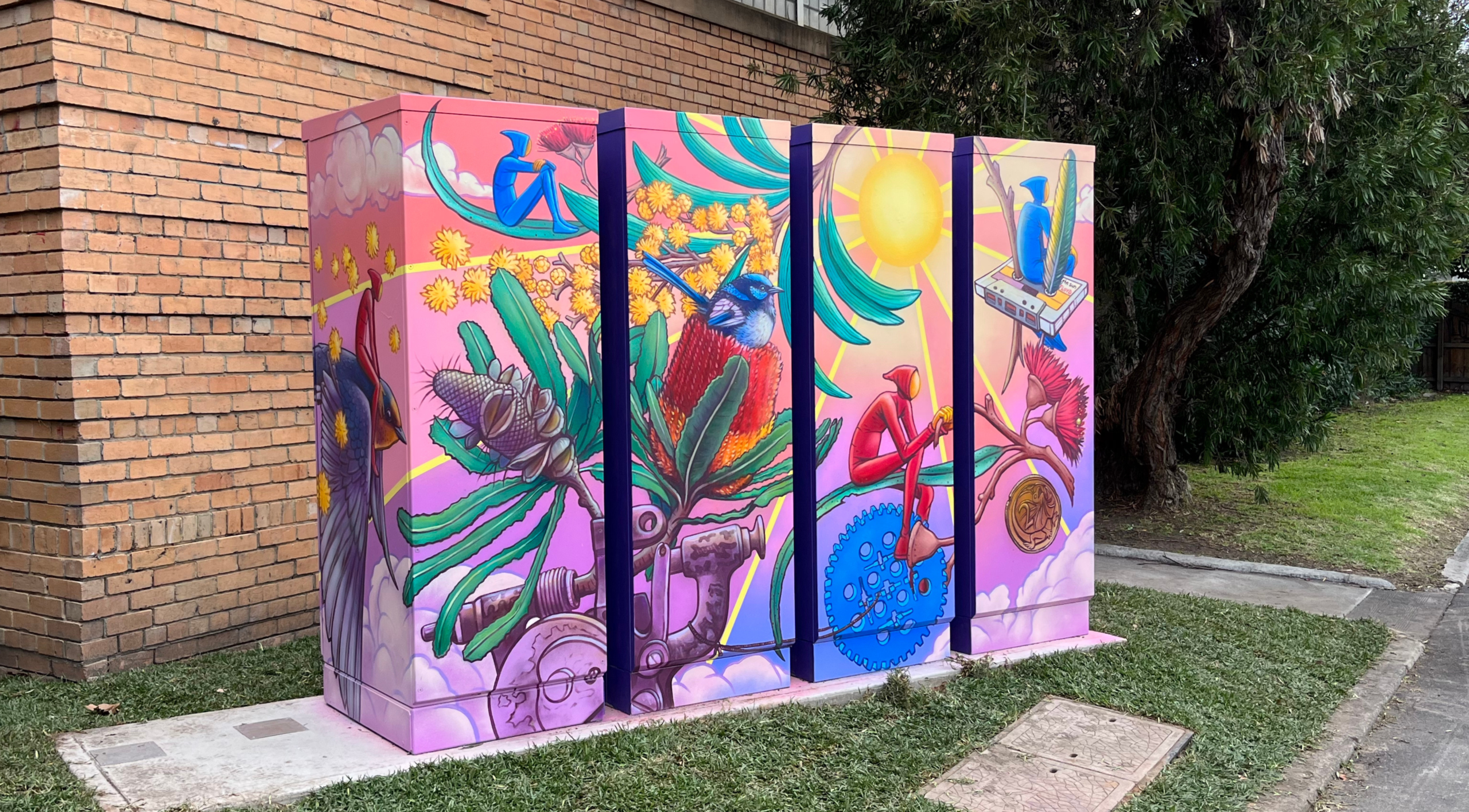A community battery is a mid-scale energy storage unit that can store energy for later use. They come in many shapes and sizes and can serve many different purposes.
The term ‘neighbourhood battery’ is also often used interchangeably, but can refer to a broader range of similar sized batteries, but which do not necessarily directly involve or benefit the community.
 Photo of our Fitzroy North community battery, the first inner-urban community battery in Australia.
Photo of our Fitzroy North community battery, the first inner-urban community battery in Australia.
The early concept of a (front-of-meter) community battery was for the storage unit to act as a ‘solar sponge‘ – storing excess clean, cheap solar energy generated by rooftop solar within the community. The idea is that the battery would store this energy for later use when people are using the most electricity. This time-shifting of energy underpins the value batteries of all sizes provide. Batteries of this scale (~25kW to 5MW) can store and shift energy to when it can provide higher value, compared to when it may have been stored.
These are the characteristics that feature in our Fitzroy North Community Battery, which we installed in June 2022 with funding from the Victorian Government. Learn more about the Fitzroy North Community Battery.